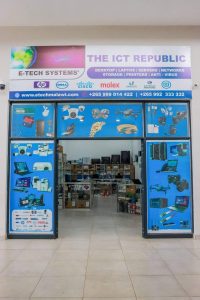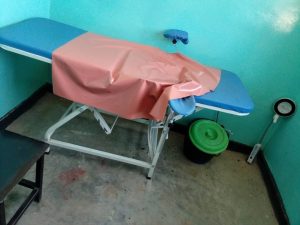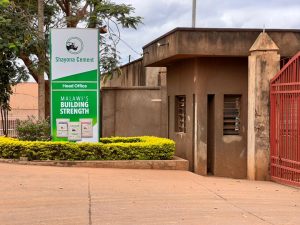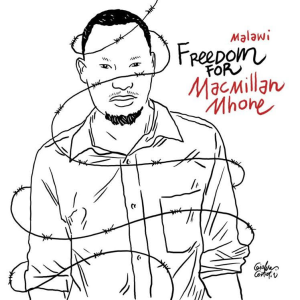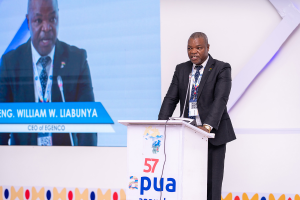DEPTH REPORTING: TO MINE OR NOT TO MINE: THE CHOICE BETWEEN WEALTH AND A CITY’S DRINKING WATER
The world’s largest known graphite deposit has been discovered in Malawi. It has the potential to change the course of this poor, developing country. But tapping into the enormous mineral wealth is complicated. Mining the deposit could poison the capital city’s only water source. While exploratory work on the mine site has started, those who inhabit the corridors of power are debating the dilemma this has raised. Some downplay the environmental risks, arguing that they can be mitigated, and others warn of an unmitigated environmental and social disaster if the mine goes ahead. This is all playing out behind closed doors. Ordinary Malawians have had no say and have no idea that this is playing out
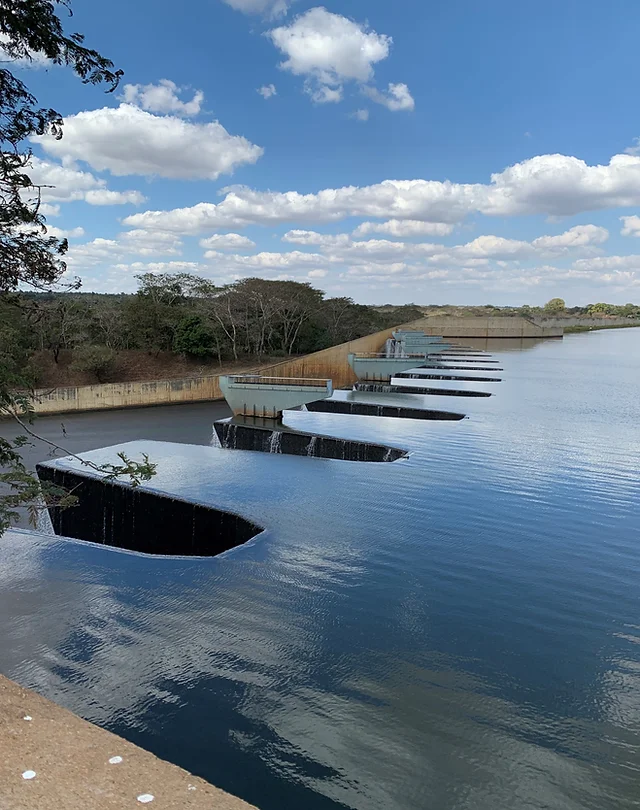
The Malingunde dam, constructed in 1989 north of Lilongwe city, is near the site of a planned graphite mine by Australian company Sovereign Metals. Source: Internet.
BY GOLDEN MATONGA
Graphite is no ordinary mineral. It’s an essential component used in a multi-billion dollar industry that produces batteries for mobile phones, laptops and electric vehicles. This makes the discovery of the world’s largest known graphite deposits in Malawi a potential game-changer for the poor, developing economy. But, it is not as easy as putting up a mine.
An Investigation by the Platform for Investigative Journalism (PIJ) has exposed how an environmental study done by the mining company that is seeking a licence to mine the area flags how this open-cast graphite mine poses a threat to the only water source supplying Malawi’s capital city, Lilongwe.
The graphite deposit is 20 km southwest of Lilongwe. While projections are that this mine would be productive for at least 15 years, the capital cost of setting the mine up will be around US$49 million.
The projected total operating costs are estimated to be about US$16 million a year, and the total revenue from product sales is expected to average about US$62 million a year over the productive life of the mine, according to figures posted by Sovereign Services Limited, an Australian company which is licensed to conduct mining exploration on the site and which is also expecting to set up the mining operation.
The mine would be set up in the Masumbankhunda Traditional Authority directly north of Kamuzu Dam II, which was constructed in 1989 and has an initial storage capacity of 9.2 million cubic metres. The dam supplies 19.8 million cubic metres of water to two main treatment plants that belong to the state utility company, the Lilongwe Water Board (LWB). It’s the only water supply line for the city’s residents, be it the presidential Kamuzu Palace or the poorest slums. It’s the city’s life source.
Before mining projects like this are given the green light, the country’s environmental law, the Environment Management Act (EMA), requires mining companies to conduct an Environmental and Social Impact Assessment (ESIA), which the company did in 2019.
The results of this environmental impact study were presented to the government and, the PIJ can show, have caused a dilemma for the government. The company’s studies, as well as other independent studies, all warn of the potential for the city’s water supply to be contaminated. However, the mining company insists that the risks are minimal and can be mitigated, which begs questions about whether the government will give them the benefit of the doubt.
However, the Lilongwe Water Board (LWB) and some officials in government doubt the credibility of the company’s confidence about mitigation. The water utility commissioned an independent team of experts to assess the mining company’s ESIA and analyse the potential risks to the water system. This team also concluded that there will be risks to lives.
The LWB and the Ministry of Water Resources have confirmed to PIJ that they had presented feedback and responses to the findings to the Malawi Environmental Protection Authority (MEPA).
However, LWB declined to share its written submission to the MEPA but told the PIJ that its response had considered the economic benefits and risks flagged in the environmental impact studies, especially threats to the water systems.
“LWB and the ministry (water resources) also considered the economic and financial benefits from the project as contained in the ESIA report against corresponding economic and financial losses that would be suffered where the current water source is negatively impacted, particularly at this point where LWB and the Ministry have made significant investments in the current raw water source for continued water security including the recent rehabilitation and raising of the Kamuzu Dam,” spokesperson Chibwana wrote to PIJ.
Elias Chimulambe, Principal Secretary for the Minister of Water Resources, wrote in a separate response that the ministry could not reveal its position on the matter as it would be “premature” but said its response bordered on ensuring the country’s vital water resources are protected.
“Suffice to indicate that it is in the interest of the Ministry of Water and Sanitation to ensure water security to the city of Lilongwe and surrounding areas given the fact that Lilongwe River and the Dzalanyama catchment reserve represent the only source of raw water for the city at the moment. Even where a new water source is implemented, it does not mean that the current water source would have to be abandoned, but that any new water sources would be complementary to the existing raw water source to ensure water security for Lilongwe city,” said Chimulumbe, the most senior technocrat in the country’s public water management systems.
A significant question around Sovereign Services Limited’s 2019 ESIA study, which minimises the potential risks for water contamination, has been raised because it has to do with the fact that the study was done by one of the company’s subsidiary companies, McCourt Mining PTY Limited.
On the quality of surface water, the McCourt ESIA notes that the project is “considered to be of moderate sensitivity, due to the proximity of the project site to the various wetlands dambos feeding the Lilongwe River (2 km away) and the Kamuzu Dam located 150 m metres from the proposed most southern pit.”
The study says contamination “may occur from runoff from operational areas where accidental spillages of fuels, solvents and chemicals have taken place.”
But the study argues such contamination can be controlled.
“Sediment control facilities will be operated to ensure water discharged to surface water resources (including the Kamuzu Dam and Lilongwe River) contains a maximum TSS of 50 mg/L. Due to the comparatively small volumes of water that could be discharged (maximum 200 m3/day or approximately 73,000 m3 per year) to the Kamuzu Dam II with a storage capacity of approximately 19 Mm3, it is anticipated that discharge will not significantly contribute to changes in water quality of the Dam or the Lilongwe River,” further reads the study.
The study reports that there will also be contamination of groundwater resulting from ad hoc spills and discharges of substances such as fuel and reagents, as well as more significant long-term pollution associated with permanent structures such as the TSF, but says this, too, could be mitigated.
“The impact from ad-hoc spillages and discharges will be mitigated by reclamation and remediation of impacted soils prior to the substances entering the groundwater,” ESIA adds.
However, the credibility of the McCourt study has also been questioned. Conducted on behalf of Sovereign Services Ltd. While it is legal for a subsidiary to do such a study, government officials speaking to the PIJ anonymously due to the sensitivity of the matter pointed out that an obvious conflict of interest lies in the fact that McCourt has a direct interest in the mining operation.
“McCourt Mining Pty Ltd (McCourt Mining) is a wholly owned subsidiary of Sovereign and was acquired by Sovereign in September 2012. McCourt Mining is the licence holder of the exclusive prospecting licence (EPL), EPL0372, an area of 732 km2 in which the Project is located (Figure E1), and will therefore be the applicant for the relevant environmental authorisation as well as mining licence application,” reads the ESIA itself report.
Other experts, including those who investigated the environmental impact of LWB, dispute the McCourt report’s findings.
“The Exclusive prospecting licence covers the entire catchment area of the water sources,” the utility company’s then-CEO Alfonso Chikuni wrote on 15th June 2019 in a letter addressed to the Ministry of Water (then known as the Ministry of Agriculture, Irrigation and Water Development).
“Open pit mining has great potential of permanently disturbing the hydrological cycle. Contamination of groundwater and surface water could negatively impact users within the zone impact and potentially result in health impacts, as water in the area is used for domestic purposes. Pollution associated with permanent structures such as the Tailing Storage Facility will affect dam water quality,” further wrote Chikuni.
It adds: “It is indicated in the Environmental and Social Impact Assessment Report (ESIA) that the seepage quality from the proposed TSF (Tailing Storage Facilities) is predicted to be pH neutral, with aluminium and fluoride expected to exceed water quality guidelines. Aluminium is predicted to exceed the Malawian Drinking Water Specifications, and fluoride is expected to exceed both the Malawi Drinking Specifications and the World Health Organisation Standard for Drinking Water. It is worth noting that baseline water quality already exceeds these standards of aluminium in some of the sampled sites.”
PIJ sourced another report carried out by the British Geological Survey on behalf of the UK Department of International Development produced for Malawi’s Ministry of Energy and Mines. Again, it warns of the project’s potential impact on Lilongwe’s water supply, describing Malingunde dam as “poorly exposed.”
Sovereign Services Limited Metals representatives did not respond to questions from PIJ. But when questions were first asked of them in 2018, the then Sovereign Metals Ltd (as the company was then known) country manager, Andries Kruger, said in an interview with The Nation that if the project goes ahead, water management infrastructure would be designed to minimise the potential impact on surface and groundwater quality.
“As part of the ESIA process, an environmental and social management plan will be developed which details the management and mitigation measures to ensure any impact is minimised and a programme is put in place to monitor the effectiveness of management measures,” Kruger said.
Around one million people live in Lilongwe, and thousands visit the city every day. Is the city’s water future compromised?
The dilemma
The state water utility company primarily extracts raw water from the Lilongwe River, which originates from Dzalanyama Forest. The water then is stored in two dams along the river; Kamuzu Dam 1 was constructed in 1966 with a storage capacity of 4.5 million cubic metres before increasing to 25 million cubic metres in 2021 upon completion of a Dam Raising project.
If Malingunde dam is contaminated, it will be catastrophic for LWB and its clients, some 1.2 million people who rely on its water supply. The population of the city is expected to grow to approximately 1.8 Million by 2036 and 2.4 million by 2045, resulting in pressure on water supply capacity amid severe water restrictions and disruptions, according to a World Bank report.
On the other hand, the country desperately needs an income-generating venture like the graphite mine, which will only increase in value. It’s not only mobile phone batteries that rely on it, but the newly introduced electric vehicles, too, are popular among the rich in the West today. There are 13.6 million electric vehicles currently on the world’s roads. While this number will only increase, graphite is also used to make the negative electrode, representing about 10 to 15 per cent of a typical lithium-ion battery.
The potential that this mine holds for Malawi, which currently relies on a waning tobacco market as its main forex income, is enormous. According to figures posted by Sovereign Metals, the graphite mine would generate government revenue during the operational phase in the form of taxation (30%) and royalties (5% of net sales revenue) as well as flow-on benefits through indirect taxation of wages and other indirect taxation benefits.
“Estimated direct tax payable over the life-of-mine is US$150 million, with an additional US$50 million in royalties,” reads part of McCourt Mining Pty Ltd’s ESIA. “The project has been designed to create maximum economic and social benefits whilst minimising negative attributes such as relocation and environmental impacts. The mining area has been designed to retain as much of the existing village infrastructure as possible and to avoid important cultural sites such as graveyards.”
Other than the Malingunde dam, there is no other supply line for the 900,000 inhabitants of Lilongwe City. Diamphwe dam, a World Bank-backed project aimed at opening an alternative dam, and the Lilongwe Salima waterway project, aimed at extracting water from Lake Malawi, are still years behind completion. Recent mapping exercises, however have revealed that Malawi has other mineral deposits in other parts of the country, including include gold, zinc, uranium, bauxite, copper, iron sulphide, rare earth, limestone, rubies and others.
Lilongwe City’s alternative water supply projects are yet to take off. The future doesn’t look good.
Geologist Yamikani Jimusole spoke to PIJ and confirmed that mining in a water catchment area does pose health risks.
“If not managed properly, mining activities have the potential to contaminate water sources, leading to adverse impacts on the quality of water supplied to residents of Lilongwe. This contamination can, in turn, pose health and environmental risks,” said Jimusole.
Another geologist, Grain Malunga, who previously served as Malawi’s Mining Minister and consulted for various major mining ventures, said the effects on the water systems are likely minimal.
“Any mining activity has a negative impact on the environment. Processing of graphite will use non-chemical methods, and minimal disruption of water flow into Lilongwe Water Board is guaranteed. Wetlands around the dams will be looked after,” said Malunga. “So Lilongwe Water Board should look at Graphite mining as a coming in of a partner to help them restore vegetation and bring sustainable livelihood for the people of Malingunde to reduce siltation of the dams.”
Could contamination of the Malingunde dam, the sole water source for Lilongwe, result in a catastrophe?
The graphite deposit poses a conundrum that will require Solomonic wisdom. Activists also argue there is a need for greater transparency. Herbert Mwalukomo, Executive Director of the Centre for Environmental Policy and Advocacy (CEPA), a non-profit, points out that the law guiding impact assessments must be reviewed following the dispute. He said current draft guidelines for ESIA reports are being revised with a draft proposal (shared with PIJ) indicating that future ESIA will have to be carried out by independent firms, not the company with the exploration licence as currently the case.
He said what is happening now is not in the spirit of the law.
“The whole essence of an ESIA is an objective assessment of potential impacts of a project to determine – 1- if the impacts are insignificant such that the project should be approved as designed or – 2- if the project needs redesigning, and –3- if the impacts are adverse and irreversible such that the project should not be implemented altogether. This cannot be achieved if the one carrying out the assessment is an interested party. It would be better if the guidelines are explicit on the independence of the consultants as it happens in other jurisdictions,” said Mwaulukakamo.
But Mwaulakamo has no illusions of what the future awaits the capital city if the project is implemented as planned. “The potential contamination of water was identified by the project’s ESIA itself,” he told PIJ.
The Natural Resources Justice Network (JRN), a consortium of civil society organisations working on environmental justice, agrees. The proximity to the dam is a major concern despite the economic prospects mining graphite brings.
“Our position remains that if Malingunde water reservoirs are the only major source for Lilongwe piped water as such, proper containment systems, monitoring and waste treatment methods were supposed to be openly shared with all stakeholders prior to the approval of the ESIA. We believe that it’s not always about the economic benefits,” said Kennedy Rashid, NJRN Chairperson.
The key agency in solving the puzzle is MEPA–which has to determine which version of risks facing Lilongwe it must accept–the one propagated by Sovereign Metals that says the risks can be mitigated or the one by the Ministry of Water, Lilongwe Water Board, the British Geological Office, environmentalists and several geologists arguing lives will be at risk. After receiving the LWB submission, Mepa requested a response from Sovereign Metals and is still waiting for a response.
“LWB provided feedback to MEPA whereby a number of pertinent issues have been raised regarding the impact of graphite mining on its water production processes given the proximity of the proposed site to its water source (Kamuzu Dam),” MEPA Director General Tawonga Mbale told PIJ.
“After receiving this feedback from LWB, MEPA Secretariat called for a meeting with Sovereign Services Limited and the Ministry of Mines where the issues raised were presented to the developer. At the end of the meeting it was resolved that LWB should share with the developer the full consultant report for consideration, after which Sovereign Services Limited would address the issues and provide a written response on the issues to MEPA,” he added.
In the meantime, the citizenry remains largely in the dark about what lies in the future. There has been no debate in parliament or anywhere.
“There is the parliamentary committee on the environment that’s where we can recommend the two reports to be reviewed and shared with the communities before any activity is conducted, and we expect,” said John Kapito, a veteran consumer rights activist and Chief executive officer of Consumers Association of Malawi (CAMA), a non-profit. “LWB (need) to trigger the parliamentary proceedings, it’s not an issue of YES or NO…let the two reports argue in Parliament.”
………………………………………………………………………………………………….
The Platform for Investigative Journalism is an independent and non-profit centre for Investigative journalism. The artwork used in this article is AI-generated. For feedback on this article and other news tips, please email goldenmatonga@protonmail.com or gregorygondwe@protonmail.com

